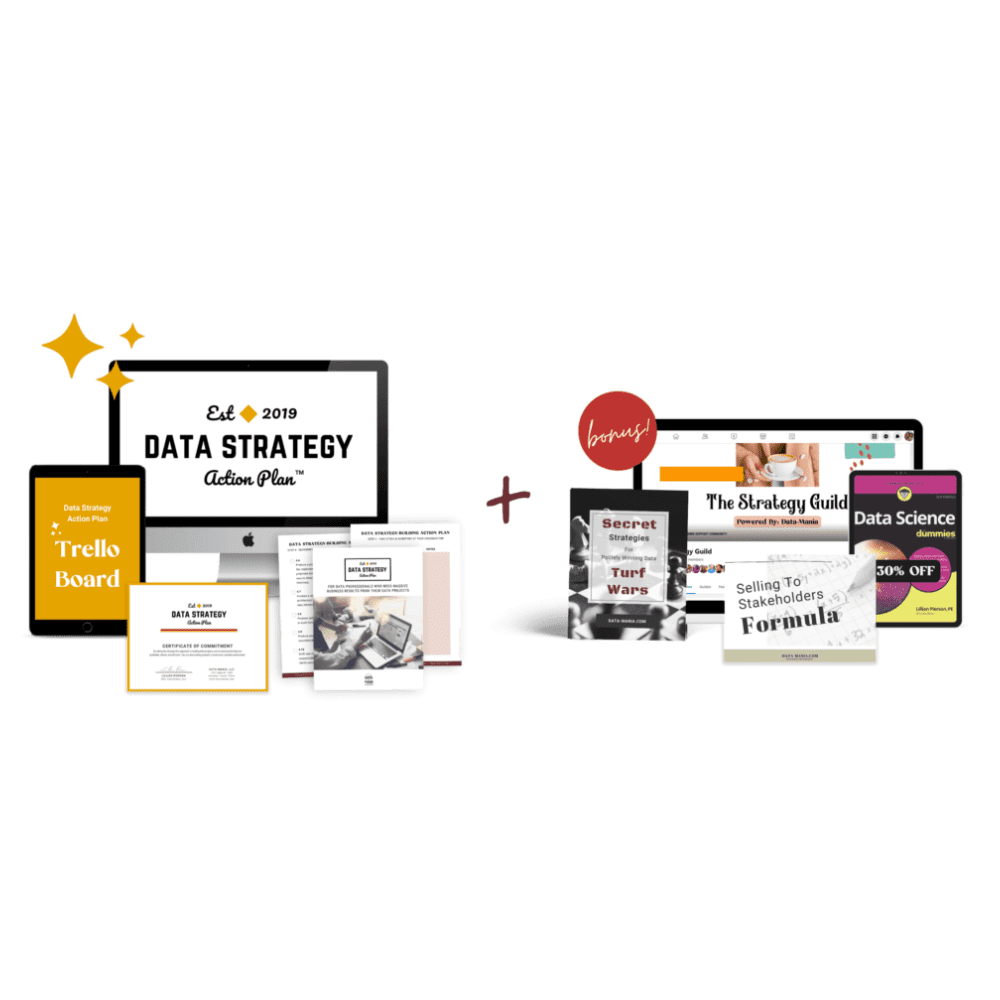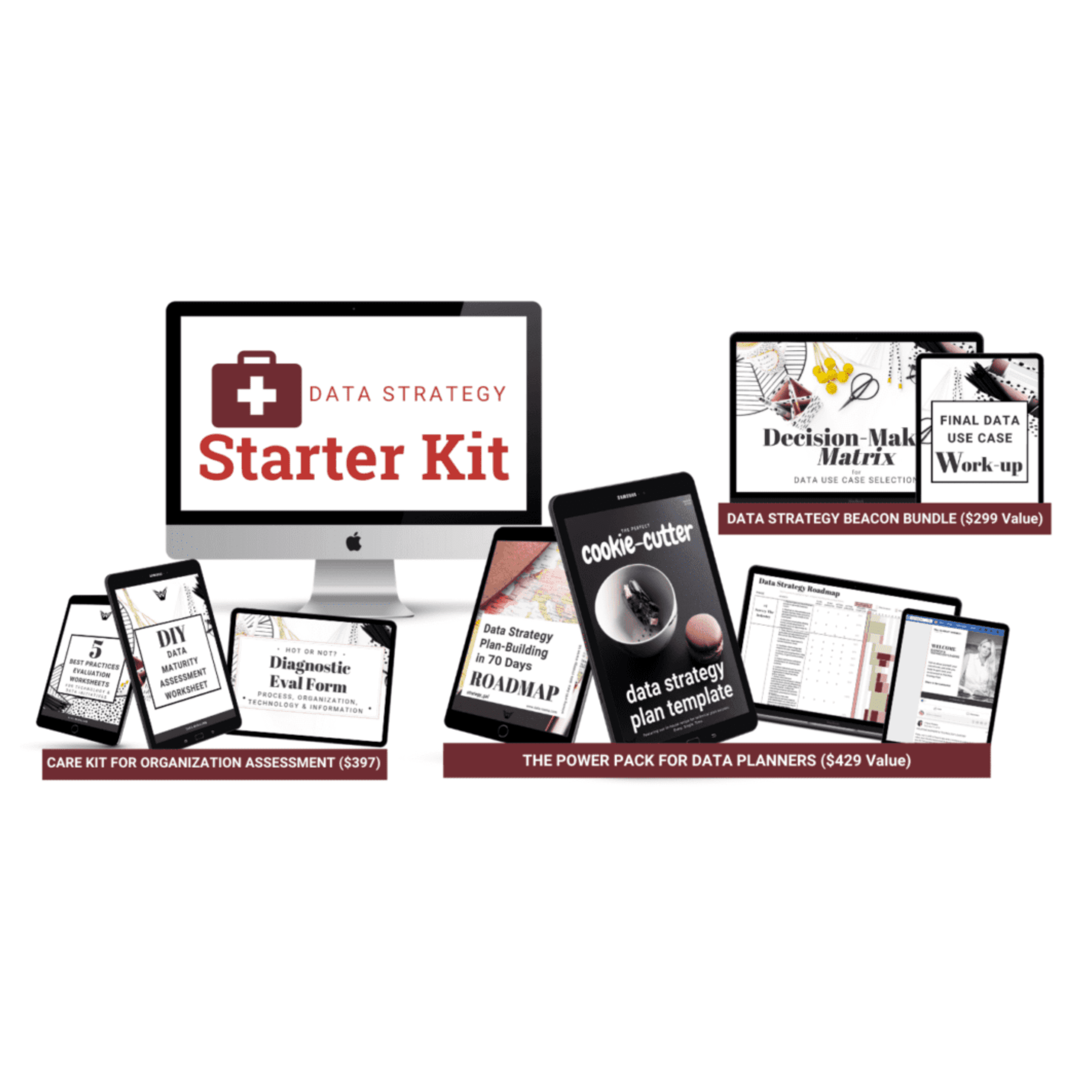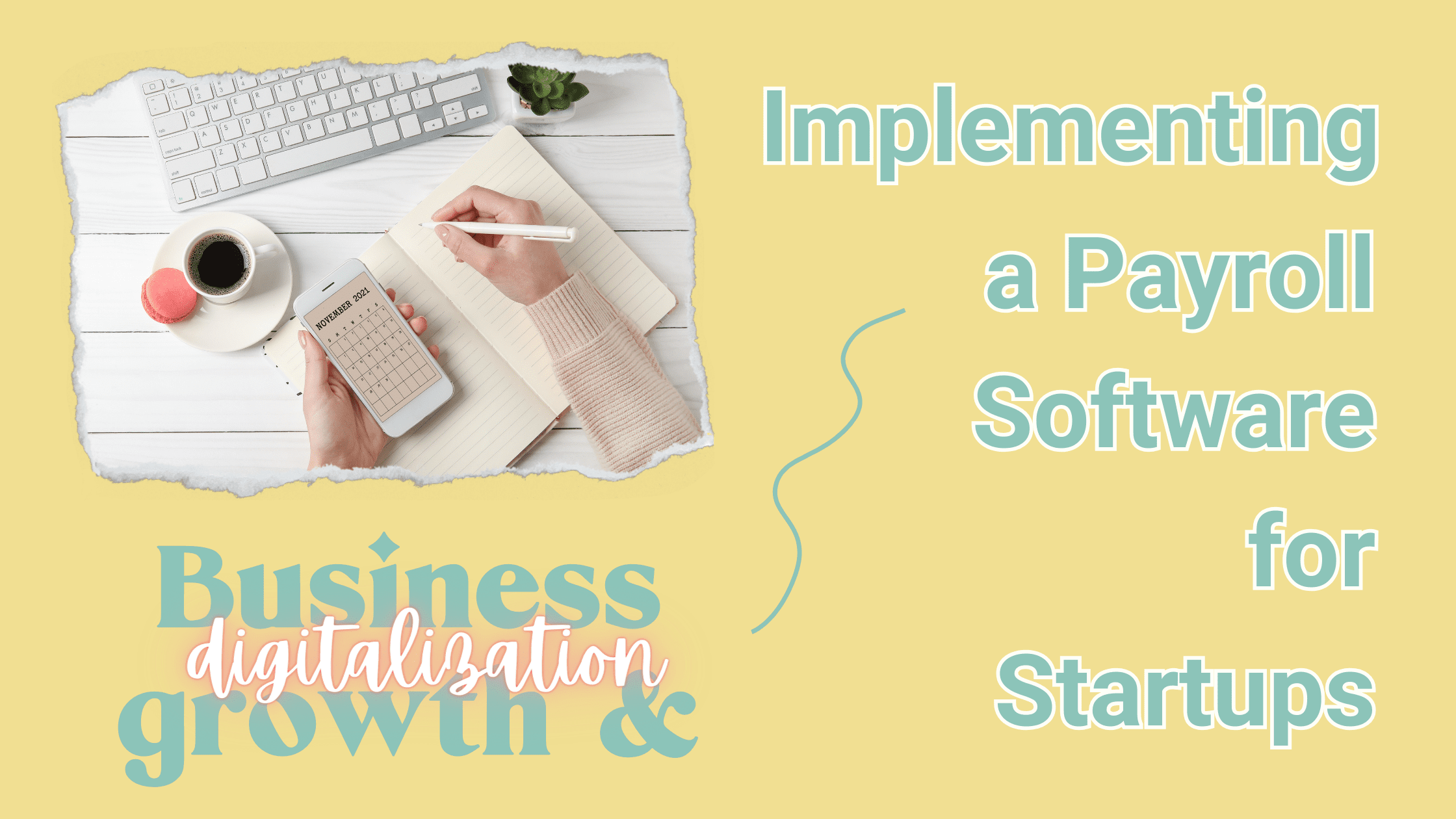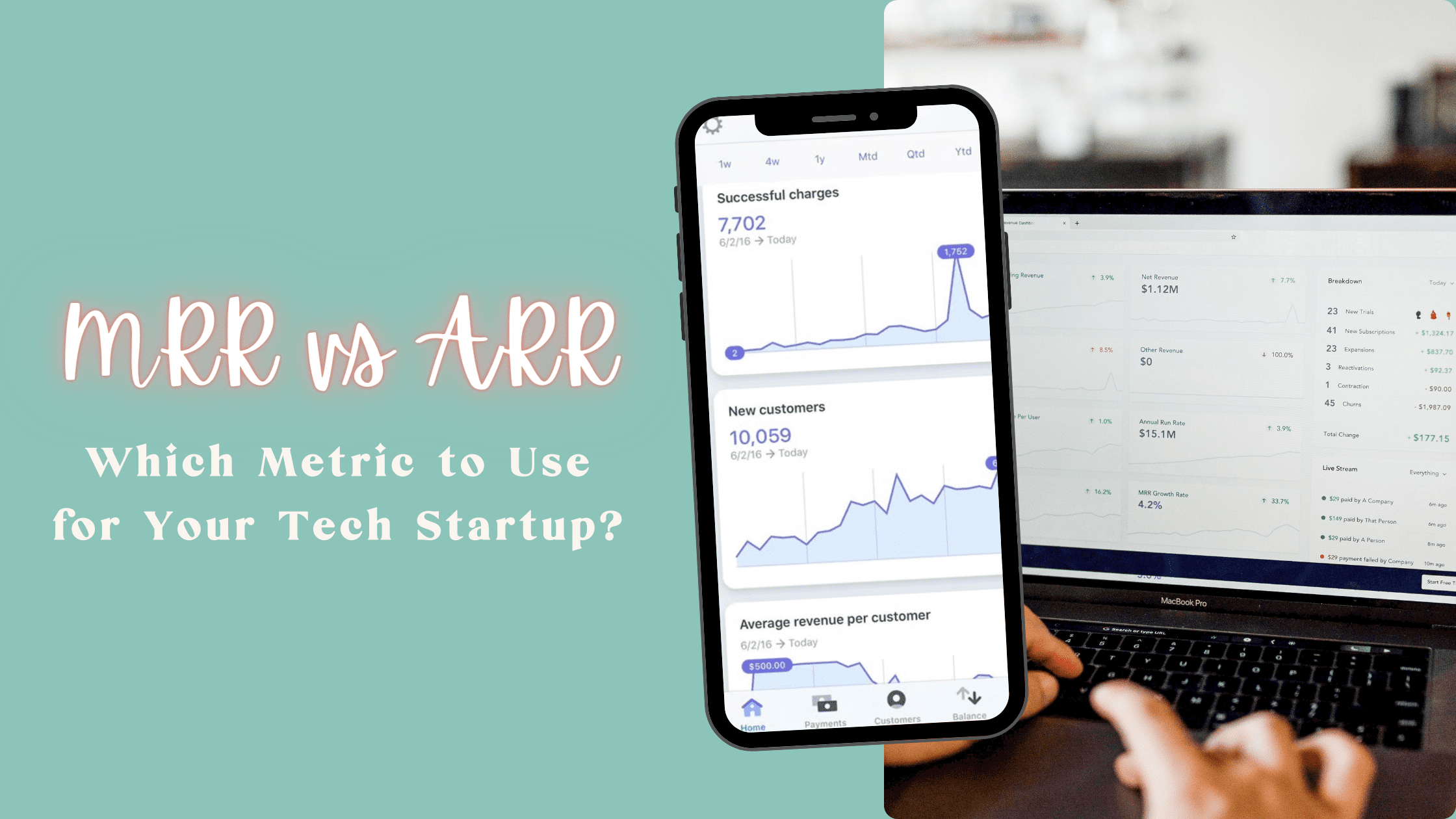Sound too good to be true? Buckle up, because I’m about to give you a whirlwind tour of everything you’ll need to know to make money from your tech skills.
In this guide, I’ll debunk the myths, reveal the secrets, and arm you with the knowledge needed to conquer the tech freelancing landscape. So sit back, relax, and get ready to discover the keys to unlocking your freelancing success!

Looking for something specific? Scroll straight to what you're looking for by clicking a link below:
- Separating Fact from Fiction in Freelance Coding Jobs
- The Growing Trend of Freelance Work in the Tech Industry
- Unlocking Your Earning Potential: Tips for Pricing Your Tech Services
- Where To Find The Best Freelance Coding Jobs & Technical Writing Freelance Projects
- Showcasing Your Skills: Tips for Building an Impressive Tech Freelance Portfolio
- How to Complement Your Portfolio with a Strong Tech Freelance Resume
- Preparing A Package For Your MVP Freelance Service
- What to Look For In Potential Clients
Separating Fact from Fiction in Freelance Coding Jobs
When it comes to freelance coding jobs or technical writing gigs, there are plenty of myths floating around about earning potentials and the lifestyle it offers.
So let’s set the record straight and give you a realistic perspective on what it takes to succeed as a freelance tech worker.
Debunking the Myths: What You Need to Know About Freelance Coding Jobs
Ah, the life of a tech freelancer. You’ve heard the stories: work from a hammock on a beach in Bali, sip margaritas, and watch the money roll in. In this digital utopia, clients flock to you like moths to a flame, and all you need is a killer LinkedIn profile and a flashy portfolio.
When something sounds too good to be true – it usually is!
So here’s…
The Truth About Freelance Coding Jobs
The tech freelancing life can be amazing! But it certainly isn’t a walk in the park (and not everyone is cut out for it).
Keeping pace with the ever-changing trends and technologies requires hard work, dedication, and ongoing education. You can’t expect overnight success.
I’m not trying to put you off. I’m just keeping it REAL! And with the right tools and strategies, you can totally achieve your dream of earning $150/hour or more as a freelance coder or technical writer, like many of my clients have done, including Yves Mulkers here:
Ready? Set. GO >>
The Growing Trend of Freelance Work in the Tech Industry
More and more people are ditching full-time employment in favour of freelance work. And who can blame them? I mean, who wouldn’t want more flexibility to spend time with their kids, or travel the world?
Around 36% of Americans now consider themselves freelance workers, and the number is growing in Europe too, with over 3 million knowledge workers in France, Germany, and Spain alone.
Individuals aren’t the only ones jumping on the freelance bandwagon. The number of businesses using freelancers over employees is on the rise. Almost half of US business owners planned to hire freelancers in 2020 to fill talent gaps (I imagine this has increased post COVID). In the MENA region, 7 out of 10 employers are doing the same.
Statistics show that freelance work is becoming increasingly important in the technology sector. It’s the perfect time to move into a booming market and establish a successful career.However, with more competition comes the need for a strong marketing strategy, effective pricing, and an impressive portfolio (all of which we’ll cover in this blog).
Unlocking Your Earning Potential: Tips for Pricing Your Tech Services
When it comes to setting rates, every freelancer struggles. You want to earn a decent income. However, you do not want to overprice yourself and scare off clients.
While technical skills can boost earning potential (see chart below), marketing is crucial to commanding the rates you deserve as well.
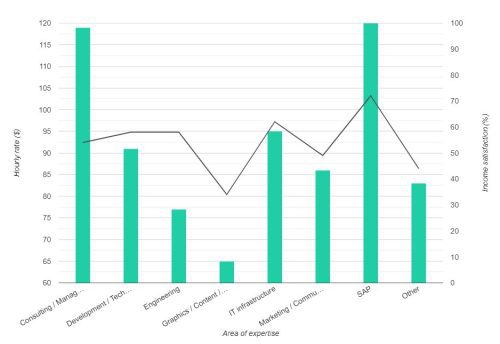

Image source: https://www.freelancermap.com/market-study
Simply having technical skills won’t necessarily translate into higher earnings. You need to clearly communicate your unique value proposition and present yourself as an expert in your field.


Essential Video #1: Consulting Rates in 2023 - 2X YOUR RATES OVERNIGHT
In this video, I’m sharing expert tips on how to set your rates, including research on what most freelancers are charging and goal rates you should be aiming for to make bank.
Essential Video #2: How to Become a Freelance Data Scientist (Or Developer 😉)
In this video, you’ll learn not only how to become a freelance data scientist (or developer) but also what kind of salary you can expect. I’ll walk you through how to make $100,000 as a freelance data scientist, even if you don’t have any prior experience in the field.
Pricing Tips For Freelance Coding Jobs
When it comes to pricing your freelance coding services, it’s essential to set your rates appropriately to avoid a “race to the bottom.”
Here are some of my top tips to help you price your services right:
- Research the market: Check out what similar services are priced at on freelance websites and ask other freelancers for their rates.
- Consider your skill level: Be honest with yourself about your experience and expertise. Your rates can increase gradually as you gain more skills.
- Factor in expenses: Remember to factor in expenses like taxes, health insurance, and software subscriptions when setting your rates.
- Value-based pricing: Consider the value you bring to the client. If your work solves a significant problem or boosts their revenue, you can charge more for your expertise.
I’ve only scratched the surface of how to price your services as a tech freelancer with these tips. For a more in-depth look at pricing check out this Guide To Pricing Your Services at $100/Hour.
Pricing Tips For Technical Writing Freelance Projects
When it comes to pricing your technical writing freelance projects, there are a few things to keep in mind to make sure you’re getting paid what you’re worth.
First off, the type of content you’re writing can impact your rates. Crafting a long-form white paper will likely take more time and effort than a set of blog posts, so you’ll want to ask for more money.
Another thing to consider is how long and complicated the content is. Super technical content is likely going to have a longer word count and take longer to write, so make sure to factor that into your rates.
Lastly, you need to decide whether to charge per project or per hour. Charging per project makes sense if you know how long a project will take. If you’re unsure, charging per hour can be helpful if you’re working on projects with varying levels of complexity or if the scope of the project changes often.
The key to setting fair rates for your technical writing work is to think about all of these factors and charge a rate that reflects the value you bring to the project.


Where To Find The Best Freelance Coding Jobs & Technical Writing Freelance Projects
To find the best freelance coding jobs or writing gigs, you’ll need to know where to look. Here are some top platforms and strategies to help you land your dream projects:
1. Freelance marketplaces
Platforms like Upwork, Freelancer, and Toptal are great places to start looking for freelance work. These platforms connect freelancers with clients who need their skills and expertise.
There’s a ton of different jobs on there from short-term projects to long-term contracts. Just create a profile and start applying for jobs that match your skills.
2. Job boards
Job boards like WeWorkRemotely, Remote.co, and GitHub Jobs are also good resources for finding freelance tech jobs. These job boards post job openings for remote tech workers, which can be a great way to find new projects.
Top tip: Set up job alerts to stay up-to-date with the latest job postings.
3. Networking
Networking is a powerful way to find freelance work. Attend industry events, join online communities, and leverage your existing contacts to find potential clients.
Some great online communities for data workers include:
Dataleaders.net
Tableau Community
Reddit.com (just search for r/datascience)
4. Social media
Social media can be a goldmine for finding freelance opportunities. Some platforms like LinkedIn even have their own job boards.
Keep your profile up to date, and don’t be be afraid to share your work and accomplishments.
Showcasing Your Skills: Tips for Building an Impressive Tech Freelance Portfolio
Your portfolio is one of your most valuable assets. It showcases your skills, demonstrates your experience, and helps you stand out from the competition.
But how do you build a portfolio that really wows potential clients? Let’s dive in…
Coding Portfolios vs Freelancing Coding Portfolios
Is there a difference between a coding portfolio for a full-time job and one for freelance work? In short, YES!
If you’re a coder looking to land high-paying clients, your freelance portfolio needs to showcase your specific services and emphasize your flexibility to work with diverse clients.
Here’s what you most need to know about building badass freelance coding portfolios that’ll land you the good jobs right off the bat…
Data Science (and Coding) Freelancing Portfolios – Include These Projects
Check out the video below where I share five must-have data projects for your portfolio that will set you apart from the competition, complete with examples.
Since you took the time to watch the video ^^, you already know what I mean when I say that a coding portfolio for a full-time job is A LOT different from the type you’d use for freelancing.
While both should showcase your skills and projects, a freelance portfolio should focus on the specific services you offer and emphasize your flexibility and ability to work with diverse clients.
Creating A Killer Portfolio For Freelance Coding Jobs
A killer portfolio can make all the difference in landing freelance coding jobs. To make your coding portfolio stand out from the rest, follow these tips:
- Show off your best work: Your portfolio should include a variety of coding projects to demonstrate your versatility and skill. Choose projects that showcase your strengths and that you’re proud of.
- Include case studies: When presenting your projects, include case studies that demonstrate the challenges you encountered, the solutions you implemented, and the results you achieved. It will help you demonstrate your ability to solve complex problems.
- Use visuals: Visuals are a powerful tool for showcasing your work. Include screenshots, GIFs, or even videos to make your portfolio engaging and easy to digest. This will help potential clients understand your work more quickly and easily.
- Include testimonials: A testimonial from a client can boost your credibility and reassure potential clients that you’re the real deal. Highlight your strengths and skills by including quotes from previous clients.
- Keep it updated: Regularly update your portfolio with new projects, skills, and achievements to stay relevant and showcase your growth.


Want to see some real-life coding portfolio examples? Jump over to this blog where I’m sharing some of my favorites (along with way MORE portfolio tips).
You can also check out a couple of my own coding demos inside these related posts:
Crafting a Winning Technical Writing Portfolio
If you’re a technical writer looking to land high-paying clients and grow your business, a winning portfolio is essential. It shows potential clients what you’re capable of, and helps you stand out from the competition.
Here are a few tips to ensure your technical writing portfolio looks great and gets you noticed:
- Include different types of content: Your portfolio should show off your skills with different types of writing, like blog posts, white papers, and user guides. This way, potential clients can see that you’re versatile and can handle a range of projects.
- Highlight your areas of expertise: If you have experience writing about specific industries or technologies, make sure to highlight that in your portfolio. You want potential clients to see that you have relevant knowledge and skills.
- Showcase your writing style: Technical writing doesn’t have to be boring! Try to show off your personality and style in your portfolio. Making it engaging and easy to read.
- Include some metrics: If you have any data that shows the impact of your writing, like increased user engagement or improved customer satisfaction, make sure to include that in your portfolio. This will help clients see that your writing has a real impact on their business.
- Link to your published work: Finally, make sure to include links to any technical writing you’ve had published on websites or blogs. This will help clients see that you have experience and credibility in your field.
By keeping these things in mind, you can create a technical writing portfolio that shows off your skills and experience and helps you land your next freelance gig!
Technical Writing Examples
One of my previous students, Meor Amor is a technical writer and content creator based in Malaysia. He uses his portfolio to sell his product and services. By sharing his work online, he attracted a remote position as a Dev Advocate at Cohere (a $125MM Series B Data Company). Check out his work here!
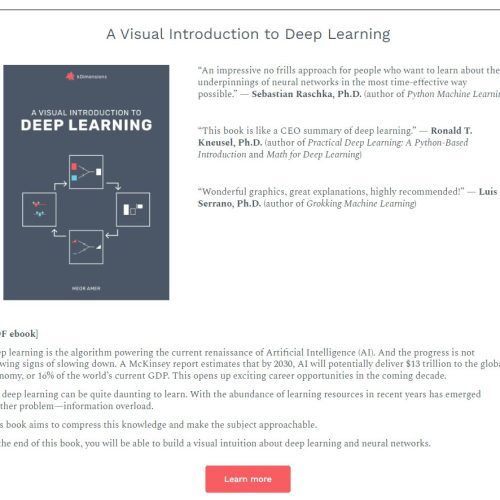

In my own technical writing portfolio, I’ve written and published 9 books on data science over 7 years. These books have helped me gain credibility in the industry as an expert and thought leader. You can check them out here.


How to Complement Your Portfolio with a Strong Tech Freelance Resume
A good resume is just as important as a great portfolio.
Your portfolio showcases your work, but your resume offers more detail and context that can help clients understand why you’re the right candidate.
When you have a well-crafted resume, your skills, experience, and professionalism will stand out among other freelancers.
Here’s my top tips on creating a resume that complements your portfolio and impresses potential clients:
- Adapt your resume to each job: Don’t use the same resume for every job application. Take the time to understand the client’s needs and highlight your most relevant experience and skills.
- Use numbers to show off your achievements: When you’re writing about your past projects and experience, try to use numbers to show what you accomplished. For example, you could talk about how much you increased efficiency or how many people used your work.
- Make sure to talk about your soft skills too: Being a great freelancer isn’t just about being technically skilled. Good communication skills, meeting deadlines, and working well with clients are all essential.
- Include any relevant certifications or education: Include any degrees, courses or certifications you have that relate to the job you’re applying for on your resume. This can help show the client that you’re committed to your craft and are always learning new things..
Preparing A Package For Your MVP Freelance Service
To make yourself stand out from the competition and attract high-paying clients, consider offering a Minimum Viable Package (MVP) for your freelance services.
Here are some things to include in your MVP package:
- Make it clear what you offer: Summarize the precise services you provide, such as UX design or web development, so customers understand exactly what they will get.
- Price it out: Provide clear pricing details for each service, whether it’s hourly or project-based. This will help clients understand the value you provide and avoid any confusion.
- Set realistic deadlines: Make sure you can meet deadlines and keep clients happy by setting realistic turnaround times for your services.
- Communicate well: Establish the best way to communicate with clients, whether it’s email or project management tools. This will make sure everyone is on the same page.
- Revision policy: Define your revision policy, including how many free revisions you offer and any additional costs for extra revisions. This will help avoid misunderstandings.
What to Look For In Potential Clients
When you’re first starting out it’s easy to say “yes” to any client. But you need to be selective. They need to fit both you and your business. By being selective, you can ensure that you’re working with people who appreciate your skills, communicate well, and offer ongoing opportunities.
You can avoid headaches and stress down the line by considering these factors:
- Budget: You deserve to be paid what you’re worth, so look for clients who value your skills and are willing to pay your rates. Don’t settle for low-paying projects that will undervalue your expertise and skills.
- Communication: Working with clients who are responsive, clear, and respectful is essential to a successful project. This will make sure that everyone is in agreement and stop any potential miscommunication in the long run.
- Reputation: Research potential clients to see if they have a positive track record of working with freelancers. Look for testimonials, reviews, or ask fellow freelancers for insights. This will help you avoid any red flags or headaches down the road.
- Scope clarity: Try to work with clients who have a well-defined project scope and expectations. This will help avoid scope creep or misunderstandings that can lead to delays or disagreements later on.
- Long-term potential: Building long-term relationships with clients can lead to steady work and referrals. Look for clients who have ongoing needs, a growing business, or a history of rehiring freelancers. This can help ensure a steady stream of work and income over time.
Freelance coding jobs and technical writing projects can be a great way to make a good living. Just remember it’s not all rainbows and butterflies! You need the right tools and strategies in place if you really want to succeed!
If you need some help, my 4-step method for successfully repackaging your data & technology expertise, then selling it through a business you own is a great place to start!
Remember that freelancing is a journey, and you need to keep learning and adapting to stay competitive. Make sure to stay current with new technologies and trends, network with other professionals, and never stop honing your skills.
Whatever stage of your freelance career you’re at, I hope this guide has provided you with some valuable insights and tips to help you succeed. Good luck and happy freelancing!
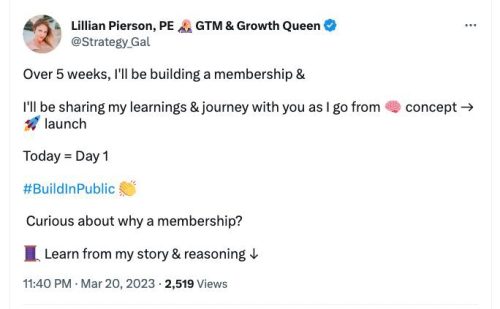

Back in March, I started building in public. A few times a week, I share progress and learning from my journey towards building a membership for startup founders! If you’d like to join in on that conversation over on Twitter, please connect with me here. And, if you’d like to be notified when our forthcoming membership becomes available, please sign up for our newsletter here.




